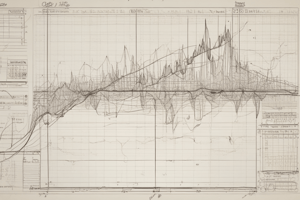Podcast
Questions and Answers
Explain rolling wave planning and its significance in project management.
Explain rolling wave planning and its significance in project management.
Rolling wave planning is a progressive planning approach where near-term work is detailed, and distant work is kept at a higher Work Breakdown Structure (WBS) level. It allows for flexibility in adapting to changes and uncertainties in project scope and requirements.
What information should be included in an activity list?
What information should be included in an activity list?
An activity list should include the activity name, an activity identifier or number, and a brief description of the activity.
What additional information do activity attributes provide?
What additional information do activity attributes provide?
Activity attributes provide more information about each activity, such as predecessors, successors, logical relationships, leads and lags, resource requirements, constraints, imposed dates, and assumptions related to the activity.
What is a milestone in project management, and how is it useful?
What is a milestone in project management, and how is it useful?
What are the inputs and tools & techniques associated with sequencing activities in project management?
What are the inputs and tools & techniques associated with sequencing activities in project management?
Explain the concept of opportunity cost and provide an example related to project cost management.
Explain the concept of opportunity cost and provide an example related to project cost management.
Define and differentiate between direct costs and indirect costs in the context of project cost management.
Define and differentiate between direct costs and indirect costs in the context of project cost management.
What are sunk costs, and why are they not considered in decision-making processes within project cost management?
What are sunk costs, and why are they not considered in decision-making processes within project cost management?
Briefly explain the process of cost budgeting in project cost management.
Briefly explain the process of cost budgeting in project cost management.
Discuss the significance of variable costs in project cost management, and provide an example of a variable cost in a project context.
Discuss the significance of variable costs in project cost management, and provide an example of a variable cost in a project context.
Explain the concept of fixed costs and variable costs in the context of project cost management, and provide an example of each in a project setting.
Explain the concept of fixed costs and variable costs in the context of project cost management, and provide an example of each in a project setting.
What are the key processes involved in project cost management, and briefly explain each process?
What are the key processes involved in project cost management, and briefly explain each process?
What is the significance of cost estimating in project cost management, and how does it contribute to project success?
What is the significance of cost estimating in project cost management, and how does it contribute to project success?
Define opportunity cost and explain its relevance in project cost management with an example.
Define opportunity cost and explain its relevance in project cost management with an example.
What are indirect costs, and how do they differ from direct costs in the context of project cost management?
What are indirect costs, and how do they differ from direct costs in the context of project cost management?
Flashcards are hidden until you start studying




